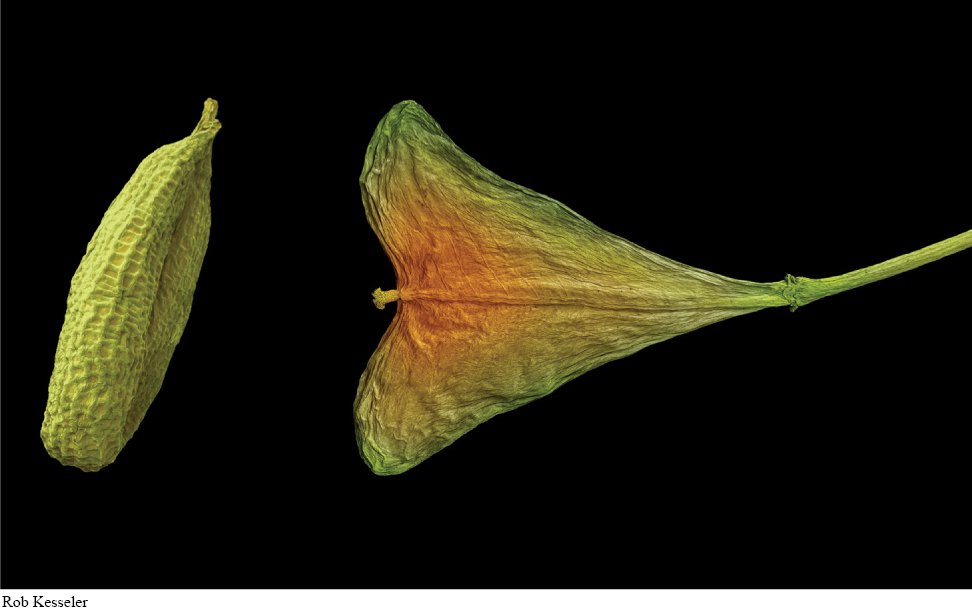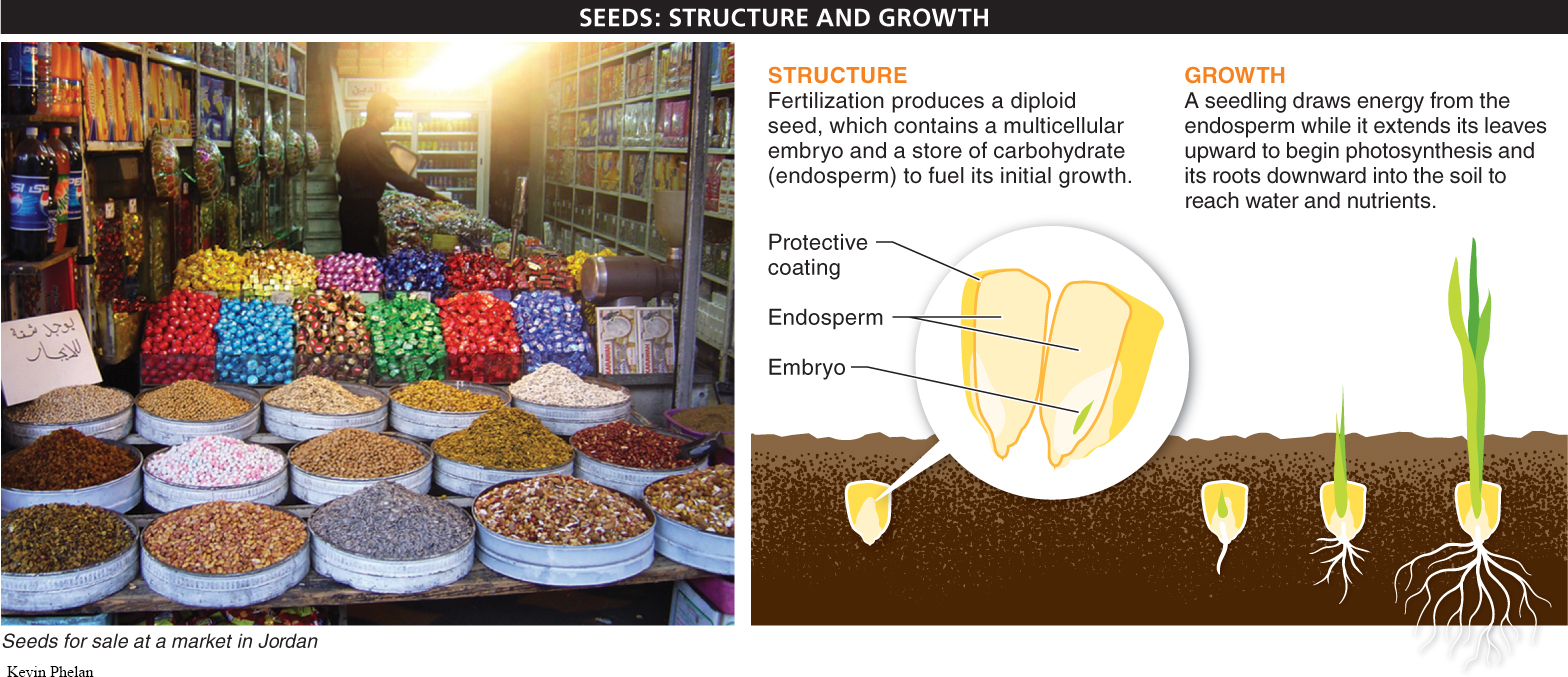
As we’ve seen, the evolutionary development of vascular tissue allowed plants to grow larger. Vascular plants could colonize areas where the soil at the surface of the ground was not always wet, because their roots could penetrate the soil to reach water and nutrients. The next big innovation in plant evolution was the seed, an embryonic plant with its own supply of water and nutrients encased within a protective coating (FIGURE 12-13).

Unlike spores, which are single cells that contain only DNA, RNA, and a few proteins, seeds contain both a multicellular embryo and a store of nutrients, mostly starch. This nutritive tissue—
504
Do plants have sex? How are seeds formed?
Like plants that do not produce seeds, seed plants have a life stage, called the gametophyte, which produces haploid gametes (sperm and egg). This is analogous to humans’ production of haploid gametes. Because the gametophyte is much smaller than the sporophyte in seed plants, these plants are considered sporophyte dominant. Pollen grains and ovules are the male and female gametophytes, respectively, of seed plants. In brief (we expand on this later in the chapter), a haploid female gamete (egg) forms inside the ovule. When a pollen grain lands near the ovule, it produces a tube that grows into the ovule. Sperm from the pollen grain move through the pollen tube into the ovule and fertilize the egg. The external layer of the ovule then forms the seed coat.
Another of the challenges that plants face is dispersing their seeds. The seed stage is the only opportunity most plants have to scatter their offspring, and seeds and seed pods have many ways to do this. These range from the forceful send-
TAKE-HOME MESSAGE MESSAGE 12.5
Seeds are a way that plants can give their offspring a good start in life. A seed contains a multicellular embryo plus a store of carbohydrate and other nutrients. Seeds are distributed by wind, animals, or water.
A seed consists of a multicellular embryonic plant with its own supply of water and nutrients that can fuel its growth. In comparison, a spore consists of a single cell lacking such energy reserves. Why does the seed represent an evolutionary improvement over the earlier forms of plant reproduction?
The evolution of the seed allowed plants to give their offspring a “goodbye gift” that contained the materials needed to begin a new life.